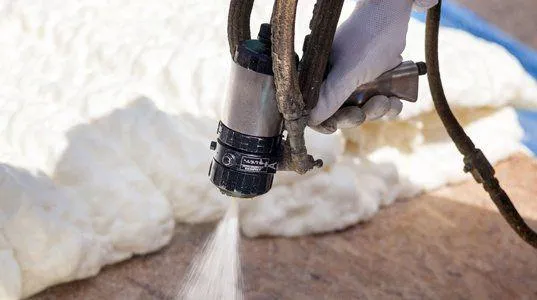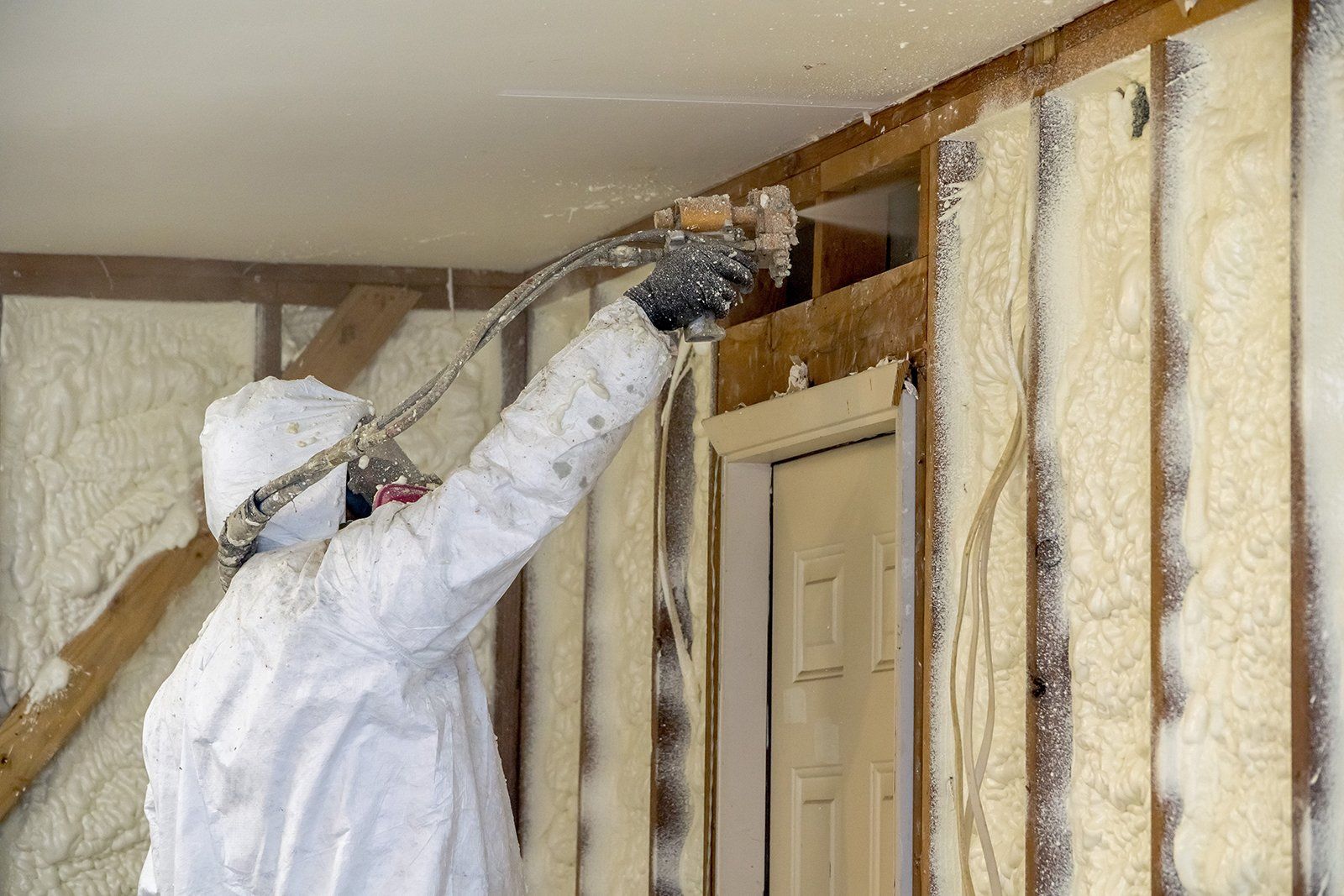
Spray Foam vs. Fiberglass: A Detailed Cost Comparison

Choosing the Right Insulation for Your Budget
When you insulate your home or business, you’re making a long-term investment in energy savings and comfort. Spray foam and fiberglass insulation stand out as two of the most popular choices. Each option offers unique advantages, but they also come with different price tags. Understanding these costs can help you make the best decision for your property and budget.
Insulation isn’t just about saving money today—it’s about improving your property’s performance for years to come. In this guide, we’ll break down the costs of spray foam and fiberglass, explain what factors influence pricing, and help you choose the right solution for your needs. Whether you’re building a new space or upgrading an older one, you’ll find the answers you need right here.
Factors That Affect Insulation Costs
Several factors influence how much you’ll pay for insulation. Understanding these variables will give you a clearer idea of what to expect when comparing spray foam and fiberglass costs.
Material Costs
The type of insulation you choose has a major impact on cost. Spray foam insulation generally costs more per square foot than fiberglass. However, spray foam’s higher upfront price comes with added benefits, like better energy efficiency and moisture resistance. Fiberglass, on the other hand, is more affordable and works well for large areas that need quick coverage.
Installation Costs
Installation costs depend on the complexity of the job and whether you hire professionals. Spray foam requires specialized equipment and skilled technicians, which increases labor costs. Fiberglass batts and rolls, however, are easier and faster to install, which can save money—especially for DIY projects. Blown-in fiberglass, though, often requires professional installation for even coverage.
Property Size and Complexity
The size and layout of your property also affect insulation costs. Larger spaces need more material, which increases the total cost. Hard-to-reach areas, like crawl spaces or cathedral ceilings, can also drive up labor costs, especially for spray foam.
Climate and Performance Needs
West Fargo’s weather plays a role in your insulation choice. If you want better performance in extreme cold or heat, you may need higher R-value insulation, which could increase the cost. Spray foam often provides better performance in these situations, while fiberglass remains a budget-friendly option for moderate needs.
Energy Savings Potential
One of the biggest factors to consider is the potential for long-term energy savings. Spray foam, while more expensive upfront, significantly reduces energy loss by creating an airtight seal. Fiberglass, although cheaper initially, may not deliver the same energy efficiency, which could lead to higher utility bills over time.
Spray Foam Insulation Costs
Spray foam insulation is a premium choice that offers unmatched performance in terms of energy efficiency and durability. While the upfront costs are higher, many homeowners and businesses see significant savings in their energy bills over time.
Upfront Costs
Spray foam insulation typically costs $1.50 to $5.00 per square foot, depending on whether you choose open-cell or closed-cell foam. Open-cell foam is less expensive but offers a lower R-value, making it ideal for interior walls or soundproofing. Closed-cell foam, while pricier, provides superior insulation and acts as a moisture barrier, making it perfect for West Fargo’s extreme weather conditions.
Installation Process
Spray foam requires professional installation, which adds to the overall cost. Specialized equipment and skilled technicians ensure that the foam is applied evenly and effectively. This precision not only maximizes insulation performance but also prevents waste. Labor costs can range from $1.00 to $2.50 per square foot, depending on the project’s complexity.
Long-Term Savings
Although spray foam costs more upfront, its ability to seal air leaks and improve energy efficiency can lead to lower heating and cooling bills. Homeowners often recover the initial investment in a few years through reduced utility costs. Its durability also means you won’t need to worry about replacements or repairs for decades.
Fiberglass Insulation Costs
Fiberglass insulation is a reliable and budget-friendly option for many homeowners and businesses. It’s a traditional choice that offers good performance at a lower cost, making it ideal for those looking to improve insulation without a high upfront investment.
Upfront Costs
Fiberglass insulation is significantly more affordable than spray foam. It costs between $0.40 and $1.50 per square foot for batts and rolls. Blown-in fiberglass, often used for attics or hard-to-reach areas, costs slightly more, ranging from $1.00 to $2.00 per square foot.
Ease of Installation
Fiberglass batts and rolls are easy to install, making them a popular choice for DIY projects. However, professional installation is recommended for blown-in fiberglass to ensure even coverage and maximum efficiency. Labor costs for fiberglass are typically lower than for spray foam, ranging from $0.50 to $1.00 per square foot, depending on the scope of the project.
Performance Over Time
While fiberglass is effective, it may degrade over time, especially if exposed to moisture or pests. This can lead to a gradual reduction in its insulating properties, potentially increasing energy costs in the long run. Regular inspections and proper maintenance can help extend its lifespan.
Cost Comparison: Spray Foam vs. Fiberglass
When deciding between spray foam and fiberglass insulation, it’s important to compare not just the upfront costs, but also the long-term value each option provides. Here’s how they stack up based on key cost factors.
Upfront Costs
Spray foam insulation has a higher upfront cost, with prices ranging from $1.50 to $5.00 per square foot depending on the type. Fiberglass, on the other hand, is much more affordable, costing between $0.40 and $2.00 per square foot for batts, rolls, or blown-in options. If your budget is tight, fiberglass is the more accessible choice.
Installation Costs
Labor for spray foam is more expensive because it requires specialized equipment and professional expertise. Fiberglass installation is simpler and typically less labor-intensive, which reduces costs. DIY installation can further lower costs for fiberglass, though blown-in insulation still benefits from professional application.
Long-Term Costs and Savings
Spray foam insulation offers greater energy efficiency by creating an airtight seal that minimizes heat loss. This can lead to significant savings on heating and cooling bills, offsetting the higher upfront investment over time. Fiberglass provides solid insulation but may not achieve the same level of energy savings, especially in extreme climates like West Fargo.
When to Choose Each Option
Choose Spray Foam if you’re looking for maximum energy savings, durability, and moisture resistance, and you’re willing to invest more upfront.
Choose Fiberglass if you need a cost-effective solution for large spaces or prefer an option with lower initial costs.
Your choice ultimately depends on your budget, insulation goals, and the specific needs of your property.
Other Factors to Consider Beyond Cost
While cost is a major factor in choosing insulation, it’s not the only one that matters. Spray foam and fiberglass offer unique benefits that go beyond their price tags. Here are some other key considerations to keep in mind.
Energy Efficiency
Spray foam delivers superior energy efficiency due to its ability to create an airtight seal. This reduces air leaks, improving your property’s overall performance and lowering utility bills. Fiberglass, while effective, doesn’t provide the same level of air sealing and may allow some heat transfer.
Durability and Maintenance
Spray foam is highly durable and maintains its insulating properties for decades. It doesn’t sag or settle over time, which means fewer maintenance costs in the long run. Fiberglass, on the other hand, can degrade or lose effectiveness if exposed to moisture, pests, or heavy wear, making regular inspections necessary.
Moisture and Air Sealing
Closed-cell spray foam acts as a barrier against both air and moisture, making it an excellent choice for areas prone to dampness or extreme weather. Fiberglass doesn’t seal air gaps or block moisture as effectively, which could lead to issues like mold or reduced insulation performance.
Environmental Impact
Fiberglass is considered more environmentally friendly during production since it often contains recycled materials. Spray foam, while less eco-friendly in production, offers better energy savings, which can reduce your overall carbon footprint over time.
Noise Reduction
Both spray foam and fiberglass help reduce noise, but spray foam has the edge due to its airtight properties. This makes it an ideal choice for homes and businesses looking for quieter interiors.
When you weigh all these factors alongside cost, the decision becomes clearer based on your specific goals.
Invest Smartly in Your Insulation
Choosing between spray foam and fiberglass insulation comes down to balancing your budget with your long-term goals. Spray foam offers superior energy efficiency, durability, and moisture resistance, making it a great investment for properties in West Fargo’s extreme climate. Fiberglass, on the other hand, is a cost-effective option that works well for larger spaces or projects with tighter budgets.
Draft Buster Insulation specializes in both spray foam and fiberglass insulation, offering tailored solutions to fit your needs and budget. Whether you’re looking to maximize energy savings or need an affordable option to insulate your property, their team has the expertise to get the job done right. With their free consultations and transparent pricing, you’ll know exactly what to expect from start to finish.
Take the first step toward a more comfortable, energy-efficient home or business. Contact Draft Buster Insulation today for a free quote and let their professionals help you make the best choice for your property. Don’t wait—invest in better insulation and start saving now!